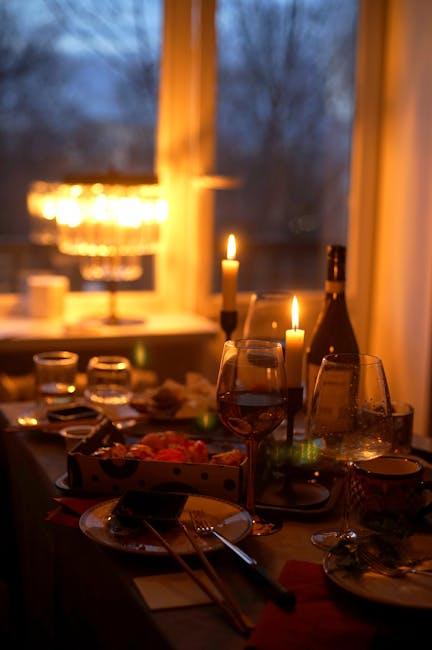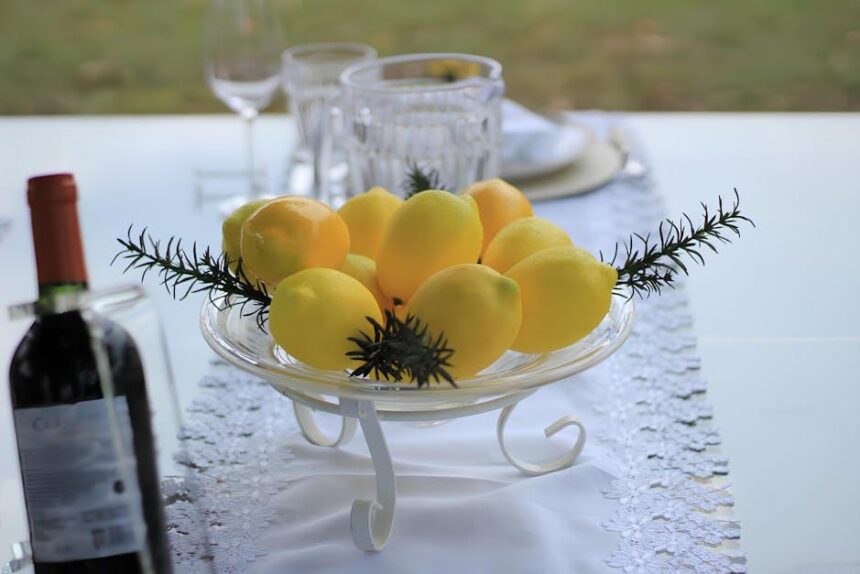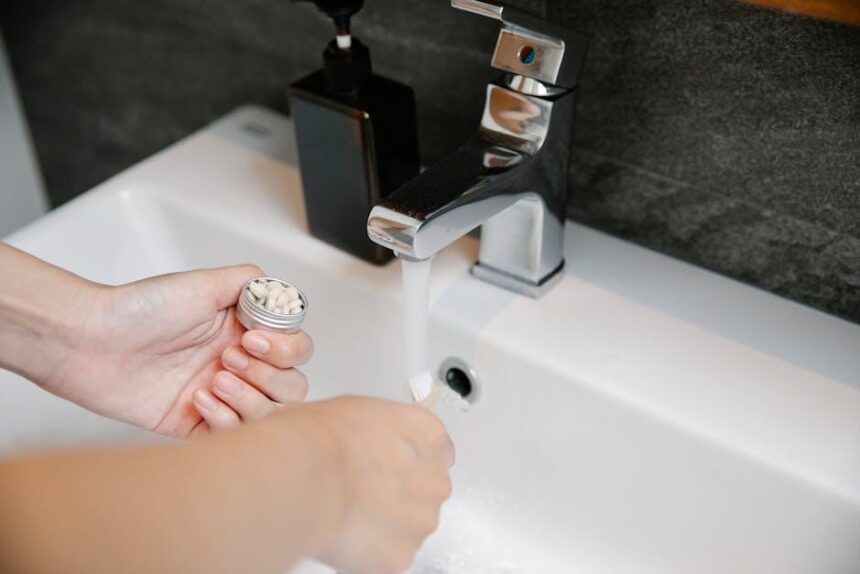As the day winds down and the table is set, an unseen force begins to shape the evening-the delicate dance of light. Subtle shifts in lighting, from the warm glow of candles to the soft dimming of overhead fixtures, hold the power to transform a simple dinner into an intimate gathering or a lively celebration. Though often overlooked, these gentle changes in illumination influence not only how we see our food but also how we connect with those around us. Exploring the nuanced ways lighting shapes mood reveals a fascinating interplay between environment and emotion at the dinner table.
Understanding the Role of Light Temperature in Creating Ambiance

The subtle shifts in light temperature-ranging from warm amber glows to crisp daylight hues-serve as a silent conductor to the symphony of a dinner setting. Warm light, typically around 2700K to 3000K, fosters intimacy and relaxation, encouraging guests to unwind and savor every bite and conversation. In contrast, cooler light temperatures near 4000K awaken the senses, making the environment vibrant and alert, perfect for energizing discussions or lively celebrations. These temperature nuances go beyond mere illumination; they sculpt the emotional canvas, influencing how people feel and interact at the table.
Mastering ambiance through light temperature is not just about brightness, but the quality of light that penetrates the space. Consider these atmosphere shaping points:
- Soft Warm Light: Deepens shadows and smooths edges, creating a cozy, inviting aura.
- Neutral White Light: Balances clarity with warmth, ideal for casual but polished dinners.
- Cool White Light: Enhances focus and alertness, often better suited for daytime or modern-themed gatherings.
| Light Temperature (K) | Ambiance Mood | Best Dinner Style |
|---|---|---|
| 2700-3000 | Warm & Cozy | Romantic, Comfort Food |
| 3500-4000 | Neutral & Clear | Family Gatherings, Everyday Meals |
| 5000+ | Bright & Energizing | Modern, Formal Dinners |
The Impact of Dimmer Settings on Dinner Conversations and Appetite
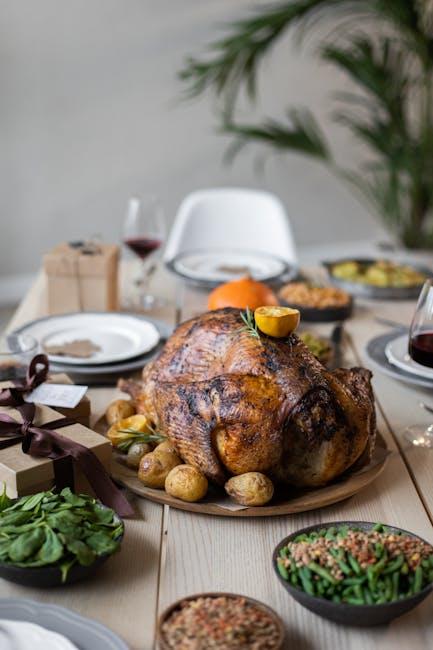
Adjusting the lighting at the dinner table can subtly steer the atmosphere, influencing how people interact and how food is enjoyed. Softer, dimmer lights tend to create an intimate environment that encourages slower conversations and deeper connections, while brighter settings often boost alertness but can lead to a more rushed meal experience. This gentle shift in illumination can make people feel more comfortable, coaxing them to linger over stories and laughter rather than simply finishing their plates. In fact, dimmer settings often support a relaxed, cozy mood, which can improve the quality of social exchanges and create a lasting memory of the evening.
Moreover, lighting directly impacts appetite and the perception of food. Warm, subdued light enhances the rich colors on the plate, making dishes appear more appealing and appetizing. Conversely, harsh lighting might emphasize flaws or dryness, inadvertently diminishing the desire to eat. The table below summarizes how varying light intensities can affect mood and appetite:
| Lighting Level | Conversation Style | Appetite Effect | Ideal Setting |
|---|---|---|---|
| Bright | Fast, Loud | Reduced Appetite | Casual, Quick Meals |
| Moderate | Balanced, Social | Neutral | Family Dinners |
| Dim | Slow, Intimate | Enhanced Appetite | Romantic or Special Occasions |
- Dim light tends to lengthen conversations, making meals feel less rushed.
- Soft glows enhance the colors and textures of food, heightening enjoyment.
- Brightness can energize the atmosphere but might shorten meal duration.
Choosing the Right Color and Placement to Enhance Culinary Presentation

When selecting colors to complement culinary creations, it’s essential to consider how hues interact with the food’s natural palette and the surrounding lighting. Warm tones like soft amber or gentle gold can amplify earthy dishes, making roasted vegetables or grilled meats appear more inviting. Cooler shades such as muted blues or greens can create a crisp contrast with seafood and salads, helping freshness pop visually. Placement of these colors – whether through table linens, dishware, or ambient accents – should guide the diner’s eye toward the plate’s centerpiece, subtly framing the feast without overpowering it.
Strategically positioning colored light sources can also elevate the dining atmosphere. For example, a localized warm spotlight can highlight intricate plating details, while diffused cooler light around the edges of the table preserves clarity without dulling the vibrancy of the meal. The following table outlines ideal color and placement combinations to enhance different cuisine types:
| Cuisine Type | Color Palette | Placement Strategy |
|---|---|---|
| Rustic | Earthy browns, deep reds | Center spotlight with warm backlight |
| Seafood | Soft blues, sea greens | Cool overhead light, side accent |
| Modern Fusion | Neutral grays, pops of neon | Under-plate glow, ambient strip lighting |
Remember: subtle shifts in color intensity and the thoughtful arrangement of light sources can transform the simplest dishes into sensory masterpieces, guiding diners through an immersive visual and gustatory experience.
Practical Tips for Adjusting Lighting to Suit Different Evening Occasions
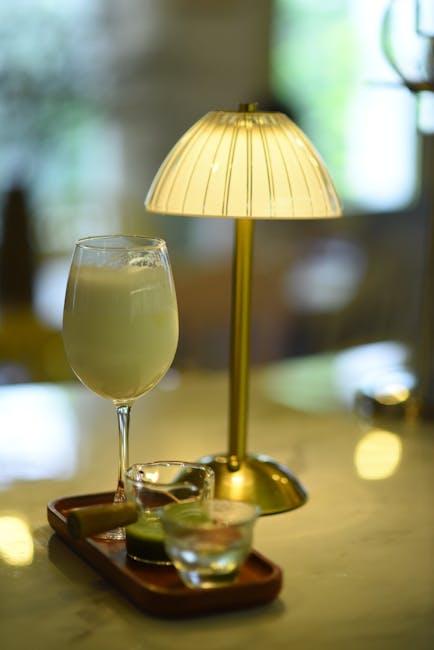
Transforming your dining space at night starts with thoughtful adjustments to lighting levels and color temperatures. For an intimate dinner, opt for warm, dimmable lighting like amber-toned bulbs or candlelight to create a cozy, inviting atmosphere. In contrast, a casual family meal benefits from brighter, soft-white LED lights that foster a lively yet comfortable setting without overwhelming the senses. Don’t hesitate to experiment with layering light sources – combine overhead chandeliers with table lamps or wall sconces to achieve depth and visual interest that can be fine-tuned depending on the occasion.
Knowing which lighting style complements different evening settings can be easier with a quick reference. Below is a simple guide to help you adjust your lighting efficiently:
| Occasion | Lighting Style | Suggested Light Source | Effect |
|---|---|---|---|
| Romantic Dinner | Warm & Dim | Candles & Amber Bulbs | Cozy, Intimate |
| Family Gathering | Bright & Soft | Soft-White LEDs | Friendly, Energizing |
| Weekend Brunch | Natural & Bright | Daylight Bulbs | Fresh, Cheerful |
| Formal Dinner | Focused & Moderate | Adjustable Spotlights | Elegant, Refined |
- Dim the lights gradually to signal a transition from day to evening and ease into relaxation.
- Use smart bulbs or dimmers to switch effortlessly between vibrancy and subtlety without harsh changes.
- Incorporate softer lampshades or fabric coverings to diffuse light and soften shadows around the table.
In Retrospect
As the final flicker of candlelight fades or the gentle glow of a pendant dims to a whisper, we are reminded that lighting is more than mere illumination-it is the silent conductor of our dining experience. Subtle shifts in brightness and hue can turn a simple meal into a delicate dance of moods, guiding our emotions as effortlessly as the passing of twilight. Understanding these nuanced changes invites us to reclaim our dinner tables, not just as places to eat, but as stages where atmosphere and appetite intertwine in quiet harmony. So next time you gather around the table, pay attention to the light-it might just transform your evening in the most unexpected ways.
